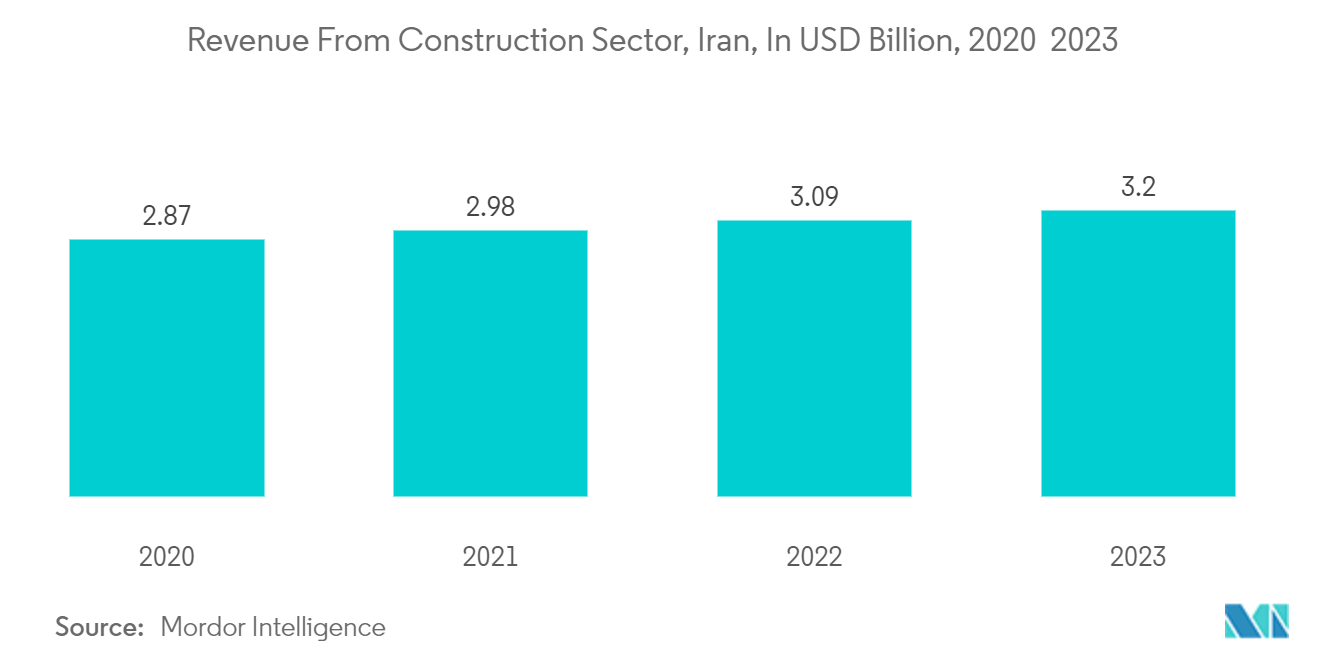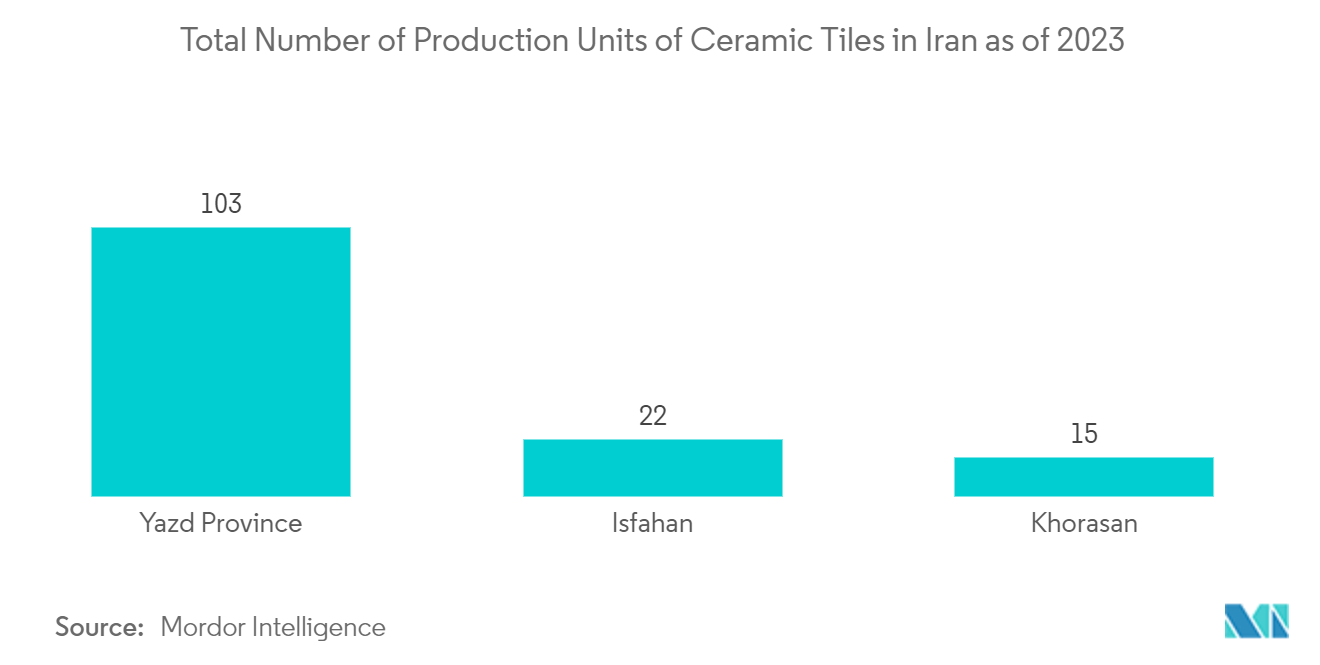Market Trends of Iran Ceramic Tiles Industry
Rising Construction Activity is Driving the Market
Iran's construction sector is expected to grow by 2.5% in real terms in 2023, following annual growth of 1.8% in 2021. It is then expected to register an annual average growth of 3.6% during 2023-26, supported by government investments in the energy, oil and gas, petrochemicals, infrastructure, and industrial sector. Construction in Iran is expected to grow 8.4% in 2023, but that figure is contingent on the revival of the Iran nuclear deal in the first half of the year.
The sector's output will be supported by government expenditure under the 2022 budget announced in December 2021. The government released a budget of IRR 36.3 quadrillion (USD 111.69 billion), projecting IRR 9.3 quadrillion (USD 28.61 billion) in revenue and IRR 13.9 quadrillion (USD 42.76 billion) in spending. It will benefit the ceramic tiles market in Iran.

Yazd Povince Records the Highest Production of Ceramic Tiles
The Ministry of Industry, Mines, and Trade reveals that the per capita production of ceramic tiles in Iran is 10,000 sq m. One of the highest-producing countries, like Italy and Spain, are producing 25,000 sq m per worker, which Iran aims to reach in the coming years. The country's production is led by Yazd province, which includes the highest number of production units of ceramic tiles with around 101 production units, followed by Isfahan with 21 and Khorasan Razavi with 14 units. The country is focusing on improving its existing infrastructure to achieve its aim by bridging the gap between the total number of production units in the Yazd province and the Isfahan region.


